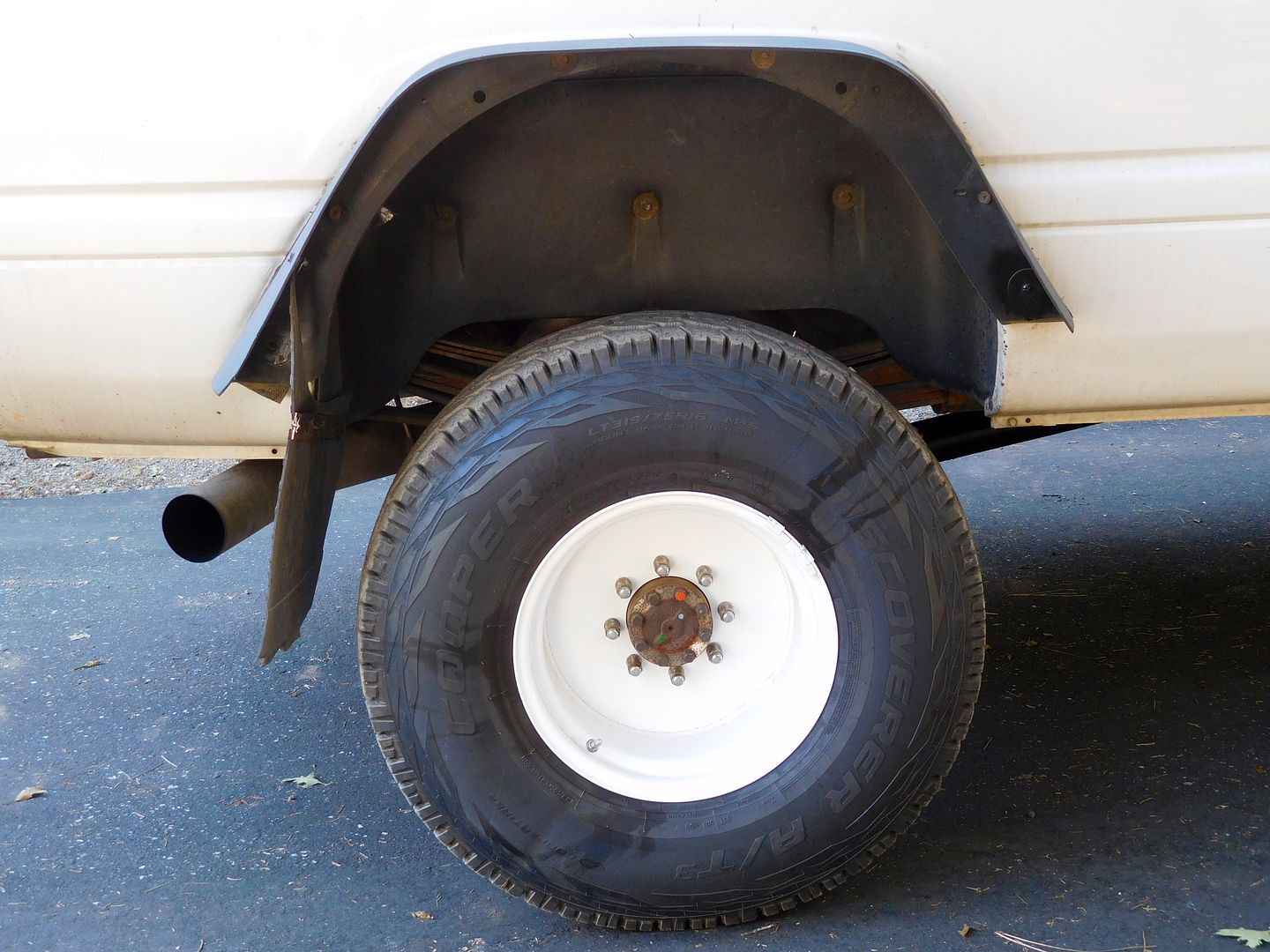My biggest question about a DRW, if I were to make the switch instead of just going to a load range F tire, is are they really that much more stable? I know a lot of people claim that they are, but I can't help but wonder if that's just not because they traded in their SRW on an expensive new truck, and they just want to feel like it's better. I will concede that the DRW will obviously carry the load better, you've got double the tire and wheel, so the load is dispersed much more evenly. The DRW and SRW both have the exact same suspension (at least comparing 3500 to 3500, a 3/4 to a 1 ton would obviously be a different story). The amount of sway should be the same in either rig, shouldn't it? The DRW is going to be harder to tip over in an off-road situation, or when going around a corner or similar situation, but it's still going to feel the same inside the cab isn't it? You're still going to have just as much lean, you'd just have a slightly reduced tipping point in the DRW right?
Thoughts? Other pro's or con's of SRW vs DRW I'm missing? I think it's either a DRW or load range F tires and forged wheels.
I agree with you here. Most of the suspensions are the same, 3500 dually or single, F350 single or dually, if anything, tire wall flex is the only difference in dually VS single, when rolling straight down the highway, or in low speed maneuvering. This is due to the weight load being spread across 4 wheels instead of 2, less weight on each wheel = less wall flex. The dually would ride rougher at the same air pressure. The the increased GAWR in a dually is the result of, and will basically be equal to the rating of the 4 wheels and tires, less a small amount. The only difference otherwise would not be realized until a near rollover situation since your footprint is wider, so in a perfect, 90 degree roll, or near roll, perpendicular to the longitudinal axis of the truck, there is certainly an advantage, and probably significant, but, and its a HUGE but, a rollover is almost never perpendicular, but during an evasive maneuver. Just remember back to riding the old three wheelers. In any kind of moving turn, all that rear wheel stability went away, and over you went as the roll vector moved towards the middle of the 3 wheeler, i.e. closer to the narrow front end. Same with a dually as this vector moves towards the front wheels in a turn. Is a dually more stable then? Absolutely, but not simply traveling straight down the highway, except for tire wall flex. If one ran stiffer tires, say load range G, on 19.5 wheels, the resulting stability on a SRW, and stability will be similar to the dually, until you get to that evasive maneuver, and rollover situation. This is why so many people comment that 19.5 wheels made a huge difference, it is essentially less wall movement in the tires, much like the dually setup, again, until we start that evasive maneuver.




